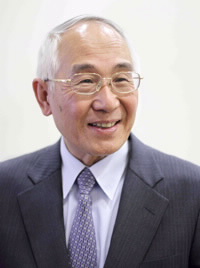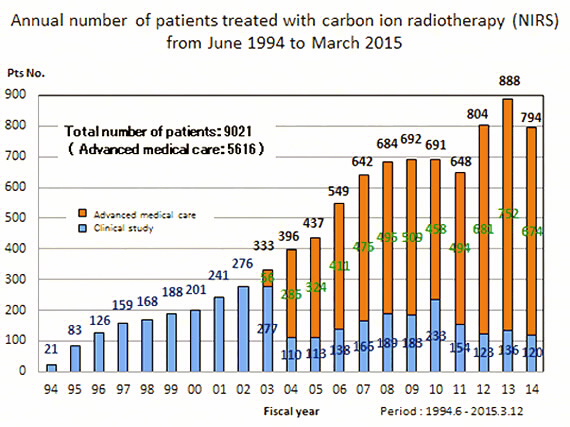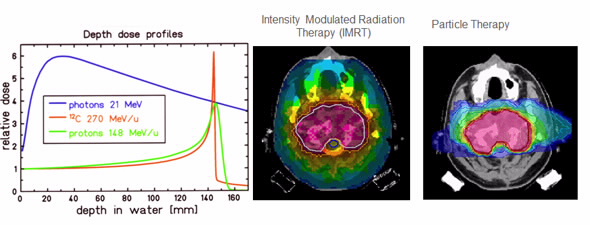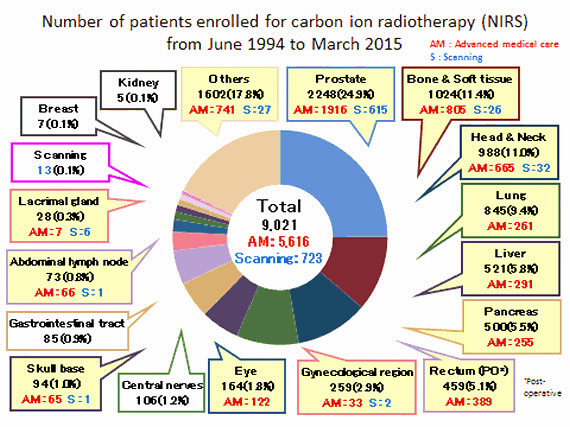Accelerated carbon ions deposit energy in the body in a far more selective manner than X-rays, allowing greater local control of the tumour and the associated lower probability of damage to surrounding healthy tissue. According to Prof Hirohiko Tsujii (pictured below), Director of the Particle Radiotherapy Consultation Clinic in Chiba and a Fellow of the National Institute of Radiological Sciences (NIRS), patients treated with carbon ion therapy experience lower rates of complications and a more rapid recovery after therapy.
Prof Tsujii, a clinician who has worked with carbon ion therapy for close to 30 years, recently visited ANSTO to share Japan’s information and insights about the therapy and its clinical advantages over conventional X-ray therapy.
 |
Japan has made a substantial commitment to cancer treatment using carbon ion therapy with the concurrent operation of five treatment facilities and an additional two under construction. This follows two decades of experience by Japan in successfully delivering this leading-edge therapy to cancer patients.
A recent overall assessment of carbon ion therapy in Japan published in The Lancet Oncology, recommended that more patients should have access to this advanced treatment modality based on the accumulated clinical results for several common cancers normally associated with poor prognosis. The paper recommends the construction of more carbon ion facilities worldwide.

ANSTO is among a group of stakeholders, which includes leading hospitals, research centres, universities and industry, who are proposing the establishment of a national carbon ion therapy and research facility in Australia. The facility could provide a therapeutic option for Australians with cancers that are difficult to treat using currently available options.
To date more than 11,000 patients in Japan have been treated with non-invasive carbon ion therapy since 1994 with up to an estimated 30,000 patients per year who would benefit from particle therapy treatment. The treatment is most commonly delivered to Japanese patients with prostate, bone and soft tissue, head and neck, lung, liver and pancreatic cancers. “But, in principle, the treatment can be delivered to all cancers that are localised without metastasis,” said Prof Tsujii.
While the construction costs of carbon ion therapy facilities are not trivial, Prof Tjujii has undertaken studies that suggest the therapy can be cost effective.
He has based this evaluation on a comparative assessment of carbon ion therapy with conventional radiation oncology approaches in terms of patient survival factors. At two years following treatment, 85 per cent of patients treated with carbon ion therapy had survived compared with 55 per cent of patients with conventional treatment. It is the need for follow up treatment for the latter group, due to a recurrence of cancer, which can also additionally increase overall economic costs.
There is also a reduction in hospital admission time with carbon ion therapy and the possibility of a significantly reduced number of patient treatment days (hypofractionation).
“We treat early stage lung cancer in a single day in one fraction and liver cancer in one to two fractions,again, in one day or two," said Prof Tsujii.
In addition to a shorter treatment period, benefits to patients include reduced pain and minimal other symptoms during and after treatment, which enables people to continue or resume normal life more quickly.

The lack of negative side effects is related to the unique physical and biological properties of accelerated carbon ions which give them their unique clinical advantages. Being a heavier particle when compared to a photon (X-ray) or protons, carbon ions deliver a higher dose of radiation which increases with depth to a sharp energy peak precisely at the location of the tumour.
Due to the physical manner in which the carbon ion dose is delivered at the cellular level, carbon ions are also associated with an enhanced relative biological effectiveness (RBE) which means they can be up to three times more effective at killing cancer cells in a tumour than conventional X-rays.
“To deliver the same amount of energy to a cancer site with X-rays would require hundreds of thousands more particles,” explained Prof Tsujii. The carbon ions in an energy beam stay more densely grouped than other particles.
By depositing maximum energy to a cancer site with little energy to the surrounding healthy tissue, side effects and the risk of secondary tumours are reduced. The carbon ion beam that delivers the dose to the tumour can also be precisely controlled and manipulated to match the size and shape of the tumour.
The toxicity due to radiation treatment is greatly reduced with carbon ion therapy. Prof Tsujii said that results from two clinics in Japan show the smallest incidence of toxicity even when compared with the most advanced X-ray based treatment option, intensity modulated radiotherapy (IMRT).
“Given our extensive experience we are confident these treatment results are reproducible.”

Treatment with carbon ions is of particular interest to oncologists in the treatment of cancers that cannot be removed surgically, tumours that are resistant to conventional X-ray or chemotherapy and for tumours that are sited near critical organs.
The Japanese have evaluated the efficacy of carbon ion and its unique therapeutic properties therapy using the Heavy Ion Medical Accelerator (HIMAC) in Chiba outside of Tokyo as well as several other dedicated hospital based carbon ion treatment facilities.
Note: A profile of carbon ion therapy delivered at the Heidelberg Ion Beam Therapy Centre in Germany is forthcoming on this website. Dr Dr Malte Ellerbrock and Dr Michael Krämer also visited ANSTO with Prof Tsujii.
Published: 03/02/2016


